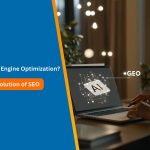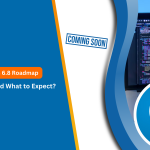Representational State Transfer (REST) APIs are highly popular among IT geeks and developers. This is one method that they use to enable different software systems to talk and share data via the Internet. In short, REST APIs make it possible for developers to execute CRUD actions on data and resources through basic HTTP requests.
Some of the most used platforms for building websites and ecommerce stores include WordPress and WooCommerce. Both have their own REST APIs that have different uses in various businesses.
Let’s look at the main differences between WordPress REST API and WooCommerce REST API more closely. This blog also takes you through some key considerations when choosing between these two APIs preferred by leading WooCommerce development services.
Overview of WordPress REST API
The WordPress REST API allows developers to access and modify WordPress data. This includes posts, pages, comments, etc., from the front end of a website. It uses common REST standards to expose WordPress data models and features to other applications. Some key things enabled by the WordPress REST API are:
- Read, create, update, or delete posts and pages as well as other types or taxonomies of WordPress data from themes or plugins.
- Add new endpoints to additional REST API for custom post types or settings linked to your WP admin dashboard.
- Build custom single page apps (SPA), mobile apps or smart frontends needing to display, modify or sync with WP data.

See How Our Experts Can Drive More Traffic to Your Website!
SEO: Boost your rankings and drive more organic traffic today!
Website Design/Development: Create a stunning website that converts visitors into customers.
Paid Media: Reach the right audience at the right time with expertly managed paid media.
It is interesting that starting from version 4.7, which was released a while back now, the WordPress REST API is part of the default installation of WordPress compared to earlier times when it was an independent plugin.
Overview of WooCommerce REST API
The WooCommerce REST API allows developers to access and modify WooCommerce store data, like products, orders, customers, etc., from external applications. It enables you to:
- Retrieve detailed information about WooCommerce products, product variations, categories, attributes, etc.
- Manage core store entities like orders, customers, shipping zones or webhooks.
- Do most important operations like cart calculating totals, adding and updating products in carts, applying coupons, etc.
The WooCommerce REST API is mostly used to integrate the WooCommerce store with custom apps as well as creating headless stores and syncing data across multiple systems. It also powers custom storefronts and comes pre-packaged with WooCommerce.
WooCommerce REST API vs WordPress REST API
Now that we know what are WooCommerce and WordPress Rest API, let’s look at some of the main differences:
1. Functionalities
| Feature | WordPress REST API | WooCommerce REST API |
|---|---|---|
| Focus | Content-centric and more generalized | E-commerce focused |
| Main Capabilities | CRUD operations on content like posts, pages, users, etc. | Order, product and customer data management |
| Strength | Content creation, editing, publishing | Transaction handling, payments, carts |
| Categories | Pages, posts, users, taxonomies, media | Products, orders, customer |
2. Use Cases
| Feature | WordPress REST API | WooCommerce REST API |
|---|---|---|
| Best suited for | Content-focused sites like blogs, news platforms, etc | E-commerce sites and applications |
| Key applications | Content management apps, multimedia platforms | Online stores, inventory systems |
| Benefits | Flexible content creation, management and publishing | Smooth order fulfillment and payment processing |
3. Integration
| Feature | WordPress REST API | WooCommerce REST API |
|---|---|---|
| Works well with | Content management systems, Frontend frameworks | E-commerce plugins, Payment gateways |
| Allows integration to | Decoupled applications using WordPress as a backend | Shipping services, Order management systems |
| Key integrations | Headless CMSs, JavaScript frameworks | Payment systems, Inventory management tools |
Considerations Before Deciding Between the Two
Before deciding whether to go for WooCommerce Rest API or the WordPress Rest API for development, some factors are key to look into like the focus of the project, functionality requirement, scalability, integration needs, user management, flexibility, development skills and future plans.
Project Focus
- WooCommerce REST API can be preferred for commerce-focused projects involving inventory, products and transactions.
- WordPress REST API is suitable for content-heavy projects targeting the creation and management of various types of content.
Functionality Needs
Examining the specific e-commerce or content management features needed is also insightful.
- WooCommerce REST API naturally excels in areas like inventory and order management.
- WordPress REST API shines for content authoring, organizing and updating use cases.
Scalability Factors
- Order volumes, products and customer interactions scale well with WooCommerce REST API.
- WordPress REST API enables scaling of content creation and publication.
Integration Requirements
- Regarding integrations, WooCommerce REST API fits neatly into the WooCommerce ecosystem, including extensions and plugins.
- WordPress REST API provides a flexible content backend for decoupled architectures using modern frontend frameworks.
Authentication
- For logged-in WordPress users, WordPress REST API uses cookie-based authentication. It also supports OAuth 1.0a authentication through plugins for external apps.
- The WooCommerce REST API allows both OAuth 1.0a and Basic Authentication over SSL and requires apps to go through an authorization flow based on an API key.
User Management
- For projects with complex e-commerce user roles and permissions, WooCommerce REST API delivers.
- WordPress REST API provides robust general user management capabilities.
Customisation Extent
- These two APIs support extensible custom endpoints albeit with variations in terms of customization requirements; then there is also the extent to which they enable this customisation. The other factor is the experience of the development team.
Development Expertise
- E-commerce seasoned teams align well with WooCommerce REST API.
- WordPress REST API suits teams aiming for adaptable content management approaches.
Practical Applications in Development
These APIs are used by a WordPress Development Agency to create different and vibrant sports web designs in practical terms. For example, a sports web design project can use the WordPress API to include live sports updates while also integrating an e-commerce store powered by the WooCommerce API. These examples of actual systems show how versatile these APIs are and how they could change a website’s functionality and user experience.
Final Words
The WordPress REST API is meant for general site integration within WordPress while WooCommerce REST API is specific to enabling ecommerce stores to connect with external systems. Both can be extremely helpful for WordPress development companies that are engaged in building bespoke solutions. Knowing the differences between them as well as their capabilities can greatly improve the quality of websites, particularly in areas such as sports web design.
If you need help leveraging these APIs for projects like headless ecommerce stores, mobile apps, admin dashboards or analytics, feel free to reach out to our WordPress development company, Icecube Digital. Our WooCommerce development services combine years of experience working with the WooCommerce and WordPress platforms. Hire WooCommerce experts who also specialize in sports web design, having created many attractive and functional websites for clients in that industry.






